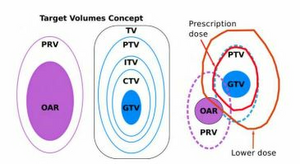Information
- Publication Type: Master Thesis
- Workgroup(s)/Project(s): not specified
- Date: 2023
- TU Wien Library:
- Open Access: yes
- First Supervisor: Renata Raidou
- Pages: 107
- Keywords: machine learning, prediction, statistical evaluation, clustering, shape descriptor, CT scan, visual analytics, prostate cancer
Abstract
In prostate cancer radiotherapy planning, the accurate description of the position and shape of pelvic organs is a crucial part of successful patient treatment. However, the treatment is conducted throughout a long period of time, during which the position and shape of the organs might significantly vary. In addition, the amount of variation tends to differ for each individual. Recent visual analytics publications investigated this by partitioning past patients into clusters with similar variability. Using this as part of a prediction for the organ variability of new patients could improve and further personalize therapy planning. However, the statistical and machine learning methods employed in these works have not been thoroughly and quantitatively evaluated so far and their impact on the final predictions has not been assessed. This thesis focuses on taking a particular implementation of these approaches, proposed by Furmanová et al. [FMCM+21], and quantitatively evaluating the effects of using different alternatives for the employed methods. We focus on two aspects: the effect of using different shape descriptor methods and the impact of modifications in the clustering methods employed. By providing an additional visual analytics framework to visually assess the effect of the aforementioned alternatives, we aim to ensure an effortless and interactive visual interpretation of the impact of various modifications. This is anticipated to support the developers of said predictive algorithms in designing more robust approaches. As a result of our investigation we have highlighted potential issues and improved the initial implementation of the proposed workflow. We conclude that at the current stage of the patient cohort used for the analysis, the selection of appropriate shape description methods should be of main focus, while a notable impact of using different clustering methods is limited to the prediction of the most extreme cases of organ shape variations.Additional Files and Images
Weblinks
BibTeX
@mastersthesis{boeroendy-2023-eui,
title = "Exploring and understanding the impact of machine learning
choices on radiotherapy decision making",
author = "Ádam B\"{o}r\"{o}ndy",
year = "2023",
abstract = "In prostate cancer radiotherapy planning, the accurate
description of the position and shape of pelvic organs is a
crucial part of successful patient treatment. However, the
treatment is conducted throughout a long period of time,
during which the position and shape of the organs might
significantly vary. In addition, the amount of variation
tends to differ for each individual. Recent visual analytics
publications investigated this by partitioning past patients
into clusters with similar variability. Using this as part
of a prediction for the organ variability of new patients
could improve and further personalize therapy planning.
However, the statistical and machine learning methods
employed in these works have not been thoroughly and
quantitatively evaluated so far and their impact on the
final predictions has not been assessed. This thesis focuses
on taking a particular implementation of these approaches,
proposed by Furmanov\'{a} et al. [FMCM+21], and
quantitatively evaluating the effects of using different
alternatives for the employed methods. We focus on two
aspects: the effect of using different shape descriptor
methods and the impact of modifications in the clustering
methods employed. By providing an additional visual
analytics framework to visually assess the effect of the
aforementioned alternatives, we aim to ensure an effortless
and interactive visual interpretation of the impact of
various modifications. This is anticipated to support the
developers of said predictive algorithms in designing more
robust approaches. As a result of our investigation we have
highlighted potential issues and improved the initial
implementation of the proposed workflow. We conclude that at
the current stage of the patient cohort used for the
analysis, the selection of appropriate shape description
methods should be of main focus, while a notable impact of
using different clustering methods is limited to the
prediction of the most extreme cases of organ shape
variations.",
pages = "107",
address = "Favoritenstrasse 9-11/E193-02, A-1040 Vienna, Austria",
school = "Research Unit of Computer Graphics, Institute of Visual
Computing and Human-Centered Technology, Faculty of
Informatics, TU Wien",
keywords = "machine learning, prediction, statistical evaluation,
clustering, shape descriptor, CT scan, visual analytics,
prostate cancer",
URL = "https://www.cg.tuwien.ac.at/research/publications/2023/boeroendy-2023-eui/",
}

 thesis
thesis

